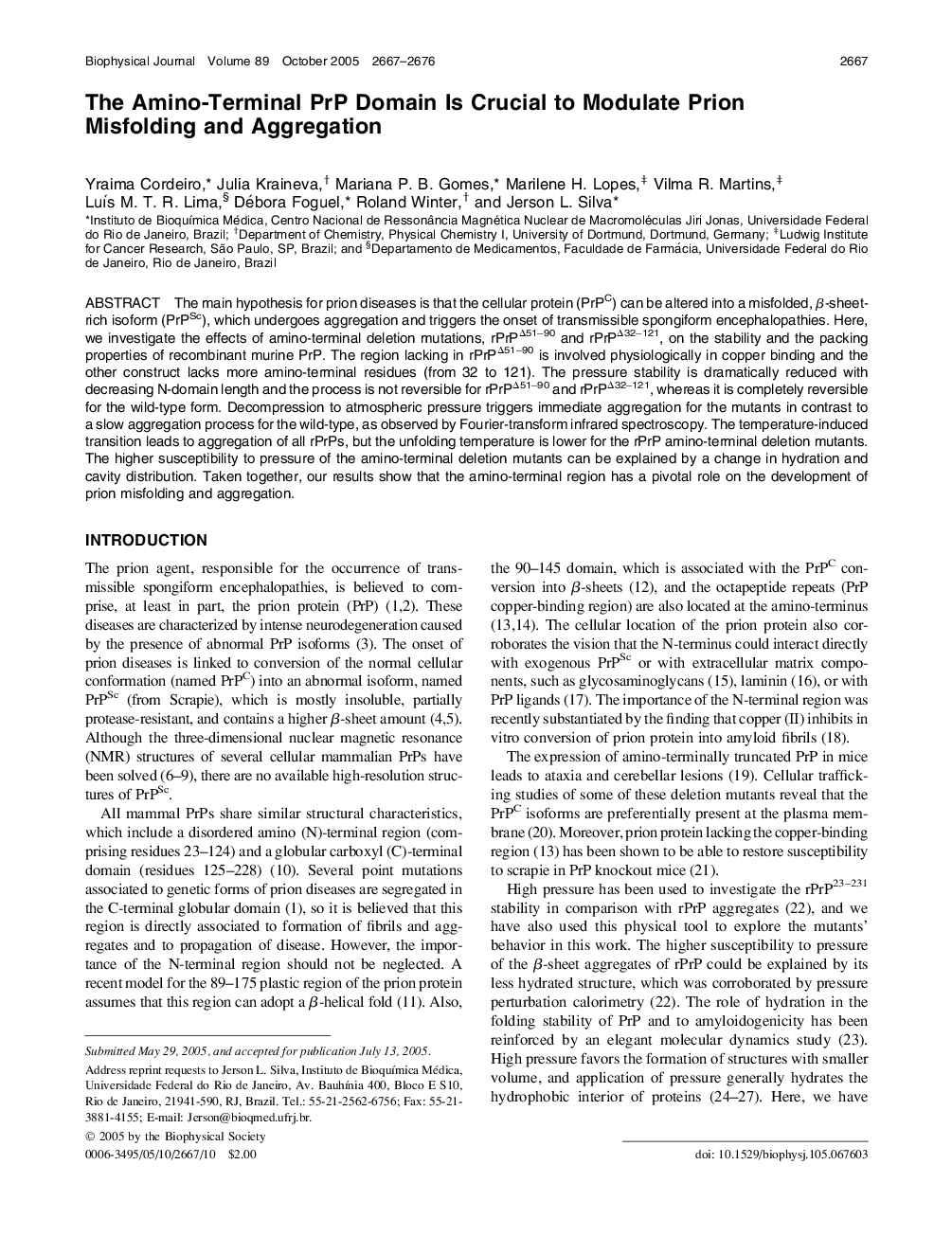| Article ID | Journal | Published Year | Pages | File Type |
|---|---|---|---|---|
| 1959029 | Biophysical Journal | 2005 | 10 Pages |
The main hypothesis for prion diseases is that the cellular protein (PrPC) can be altered into a misfolded, β-sheet-rich isoform (PrPSc), which undergoes aggregation and triggers the onset of transmissible spongiform encephalopathies. Here, we investigate the effects of amino-terminal deletion mutations, rPrPΔ51–90 and rPrPΔ32–121, on the stability and the packing properties of recombinant murine PrP. The region lacking in rPrPΔ51–90 is involved physiologically in copper binding and the other construct lacks more amino-terminal residues (from 32 to 121). The pressure stability is dramatically reduced with decreasing N-domain length and the process is not reversible for rPrPΔ51–90 and rPrPΔ32–121, whereas it is completely reversible for the wild-type form. Decompression to atmospheric pressure triggers immediate aggregation for the mutants in contrast to a slow aggregation process for the wild-type, as observed by Fourier-transform infrared spectroscopy. The temperature-induced transition leads to aggregation of all rPrPs, but the unfolding temperature is lower for the rPrP amino-terminal deletion mutants. The higher susceptibility to pressure of the amino-terminal deletion mutants can be explained by a change in hydration and cavity distribution. Taken together, our results show that the amino-terminal region has a pivotal role on the development of prion misfolding and aggregation.
